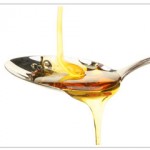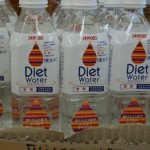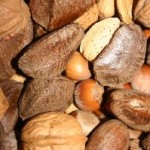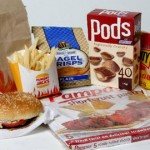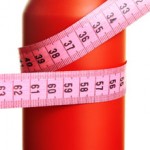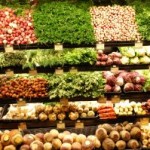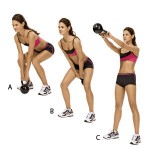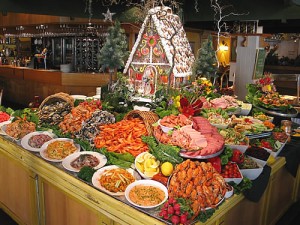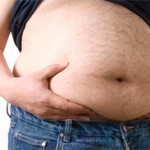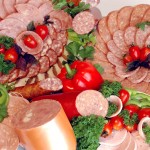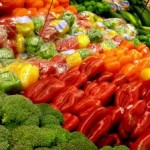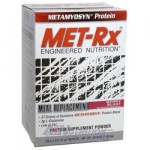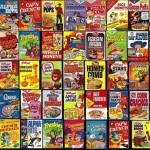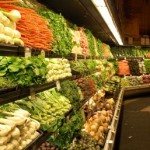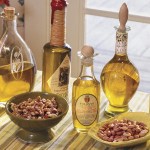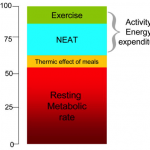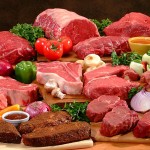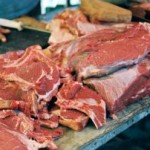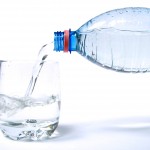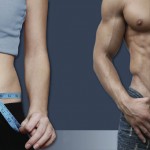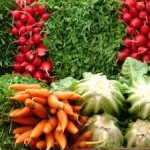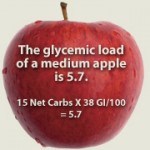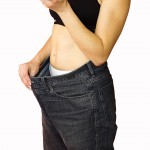Welcome back – there are six rules to live by contained in this post.
Six rules that will keep the fat off, keep you lean and if you are fat already will help you re-condition your metabolism and get leaner and healthier.
Six rules that if you adopt them will improve your quality of life.
Six rules that if you pass them on to your family and your kids they all will live better, less disease prone lives.
Rule #1: Severely Limit Fructose in Your Diet
I’ve written before about the evils of fructose (http://bodyshapeshiftersonline.com/2011/10/01/fructose-but-not-glucose-knocks-your-metabolism-backwards/) and the evidence against this ghastly additive continues to rise.
You need to realise that we are programmed through evolution to desire sweet and salty foods. This is hardwired into us and what was once a survival mechanism has become an out of control craving. A hunger that food manufacturers use to their advantage.
I’ve often said that you can’t out train a bad diet – that exercise alone, no matter how often or how hard, will keep you lean. It is your diet that makes the difference and it is the easiest thing to lose control of.
Simply put ant exercise you do can be undone just by ingesting fructose laden beverages and foods. Soft drinks / soda, fruit drinks and sports drinks – most if not all are full of fructose and make you fat. Vitamin Water for example has 33 grams of sugar in its regular sized bottle, a can of Coca Cola had 27.
The science is not in dispute (again click on & read the above article for the facts)
By now you should be used to reading the labels on any & all processed / packaged foods that you eat. If you don’t then when you start the amount of sugar in the food you routinely eat will shock you. Even worse because it is cheaper to manufacture & use much of this sugar is fructose.
Restricting the amount of fructose in your diet is vitally important for fat loss, lean maintenance and overall health.
There are numerous reasons for this but latch onto this one if no other: eating fat does not make you fat; eating excessive fructose does!
Look at cans of soft drink / soda as you have been taught to view a chunk of fat and you would be on a truer road to wellness. (BTW the fat would be healthier for you!)
Fructose simultaneously promotes fat storage and maintenance by:
- Impacting your Leptin levels resulting in reduced feeling of being full (satiety) so you stay hungry for longer and eat more. (for more on Leptin read this: http://bodyshapeshiftersonline.com/2011/08/20/metabolism-what-it-is-how-you-can-make-it-work-for-you-part-7/)
- Excessive fructose actually enhances ghrelin release – the ‘keep eating I’m still hungry hormone’ (Glucose however does suppress ghrelin – see all sugars, like all calories are most definitely NOT equal!!)
- Over time, excessive fructose contributes majorly to the development of insulin resistance.
- It raises triglyceride levels significantly
- It converts to fat more easily and readily than any other sugar.
- Etc etc etc – do you need more reasons to avoid this additive?
Many health experts are now suggesting that we all strive to keep our daily fructose levels – including that from fruit – to under 25 grams per day. Aim for 15 conscious grams from fruit and try to have zero from other sources this way you’ll hit the 25 gram level easier.If you need to drop body fat then you need to aim for 15 grams total.
Rule # 2: Reduce Your Grain Carb Consumption
Like fructose there is an increasing amount of research coming out that says that grain based foods and carbs are bad for us and are another major player in the obesity epidemic.
Some of the common side effects associated with high grain based food intake are:
| Excess body fat | Depression | Abdominal Bloating | High blood pressure |
| Fatigue and frequent sleepiness | Brain fogginess | Low blood sugar | High triglycerides |
If you experience any of these symptoms, then the chances are very good that the excess grain carbohydrates in your diet are to blame.
The main reason to cut down if not out grain based foods from your diet is that these foods convert easily into sugar and cause insulin spikes. A few slices of bread has the same effect on blood sugar levels as a Mars bar or two…
Insulin spikes eventually lead to the development of insulin resistance and more fat storage as well as Type II adult onset diabetes, obesity, heart disease and other chronic diseases.
So to be come healthier & leaner reducing your grain based carb consumption is a must!! This means cutting down or preferably OUT:
- Breads and baked goods (ALL grains, organic ones aren’t any better)
- Breakfast cereals (including oats & muesli)
- Rice (white, brown & wild)
- Pasta
Your body needs carbs but due to clever & insistent advertising most folk think carbs means grains & cereals when what we need to eat for our carbs are fruit and vegetables.
Our ability to store carb created sugars (as glycogen in the liver & muscles) is limited so excessive carbs, especially those readily converted to sugar get stored as fat.
Grains are at best left to be an optional & rare extra.
Rule # 3: Increase Your Healthy Fat Consumption
Fats are where its at in terms of fuelling your body.
NOT TRANSFATS though – they are dangerous (see http://bodyshapeshiftersonline.com/2011/10/29/the-fat-in-your-diet-is-not-the-fat-on-your-hips-or-belly-or-thighs-or/) See below as well.
Carbs provide sugar and provide quick burning fuel when taken in the right amounts. But for endurance and satiety fat is what your needs.
Once you reduce your sugar load through avoiding grains & fructose then you need to replace them with increased amounts healthy saturated fats. Fats provide you with high quality fuel your body needs and do not cause insulin spikes. However eating a lot of margarine, or vegetable (more correctly seed) oils is asking for trouble as these types of trans fats have been linked to:
| Cancers of various types | Lower immune function: | Obesity |
| Diabetes | Hormonal problems – especially testosterone in males | Heart disease: Trans fats can cause major clogging of your arteries |
Healthy fats are:
| The preferred fuel for your heart | Useful antiviral agents (caprylic acid) | Useful for lowering cholesterol levels (palmitic and stearic acids) |
| Carriers for important fat-soluble vitamins A, D, E and K, and required for the conversion of carotene to vitamin A, for mineral absorption, and for a host of other biological processes | Effective as an anticaries, antiplaque and anti fungal agents (lauric acid) | Modulators of genetic regulation and prevent cancer (butyric acid) |
Good sources of healthy fats include:
| Olives and Olive oil (for cold dishes) | Coconuts, and coconut oil (for all types of cooking and baking) | Butter, best made from raw grass-fed organic milk |
| Raw Nuts, such as, almonds or pecans | Organic pastured egg yolks | Avocados |
| Grass fed meats | Palm oil | Unheated organic nut oils |
Lastly let’s not forget Omega #’s. Best gotten from dep cold water fish like salmon, mackerel or sardines or from quality Krill supplements Omega 3’s are the closet thing to a winder drug in terms of fats yet discovered.
For more information about omega-3’s please read this Dr. Mercola article. I do not agree with everything he says but he is on the money more often then not!!
Rule # 4: Avoid All “Diet” Foods.
It turns out that artificial sweeteners may be linked to weight gain. This appears to be because the artificial sweeteners are less satisfying for your body and may actually increase cravings for the real thing.
If a food says it is diet & contains any of the artificial sweeteners avoid it unless you want stronger sugar cravings…
Rule # 5: Eat lots & lots of Vegetables
Two posts ago we looked at the incredible story of Dr Terry Wahl & how she reversed her MS by eating the equivalent of 6 heaped dinner plates of fruits & vegetables with lean protein everyday.
Her story and more research than you can jump prove that one of the easiest and most effective ways to improve your health and drop body fat is to increase your intake of fruits & vegetables.
There is a lot of talk about the need for these to be organic and there is some truth in this, but if you are currently eating a typical western diet don’t worry about the source so much as worrying about getting more F&V into your diet. (BTW frozen F&V has been shown to have vitamin & mineral profiles as good as if not better than many ‘fresh’ F&V from supermarkets…)
Rule # 6: Exercise often and smartly.
Lift some weights, walk often, sprint once a week, play a sport, do some yoga but move more & sit less whilst challenging your muscles & cardiorespiratory system.
Go back though this blog for programs to use or check out Craig Ballantyne’s Turbulence
Training programs (link to the right a and yes it is an affiliate one!)
The secret to increasing your fat loss is to include some high-intensity, short-burst-type exercises, two to three times per week. Several studies have confirmed that exercising in shorter bursts with rest periods in between burns more fat than exercising continuously for an entire session. Forget hours on exercise bikes or treadmills try metabolic resistance exercise.
| Use a variety of exercises (weight training, cardio, stretching, etc.) | Alternate difficult days with easier days | Exercise outdoors, which helps maintain vitamin D levels and improve mood |
| Partake of Interval training sessions 2 x a week | Lift weights 3 x a week | Walk and run on softer, uneven terrain, such as sand, grass and dirt, possibly barefoot or in your Vibrams. |
| Vary your weight program every 30 or so days | Ensure that you leave enough time for recovery after physical exertion | Include Recreational activities, including dancing and sex |
If you’re like most Western adults, especially those of us over 35 years old then you’re likely carrying at least a few too many pounds / kilos of excess body fat.
If you adopt these 6 rules you’ll lose them and quicker than you imagine.
Give these a go and let me know how you find them!!
See you next week.
Be well.

